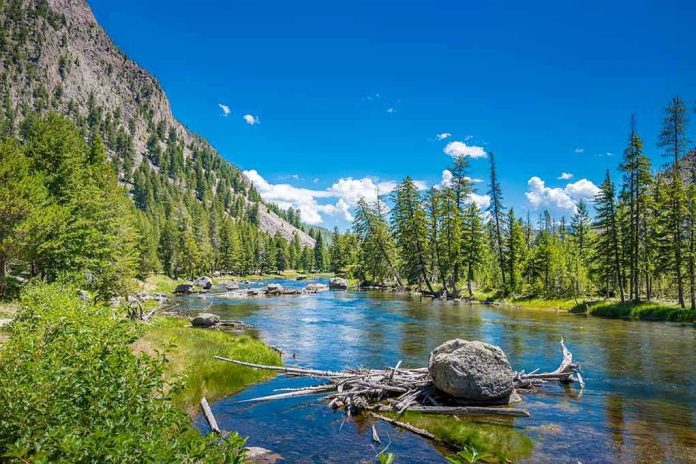
Deep in Connecticut’s forests lies a village so steeped in supernatural dread that landowners have made it a criminal offense just to set foot on its abandoned grounds.
Story Snapshot
- Dudleytown, Connecticut is legally off-limits due to its cursed reputation and Blair Witch Project-like atmosphere
- Trespassing is now prosecuted as property owners combat vandalism and anti-social behavior from thrill-seekers
- The abandoned 18th-century settlement gained notoriety through legends of unexplained deaths and madness
- Paranormal enthusiasts continue attempting illegal visits despite strict enforcement measures
America’s Most Forbidden Ghost Town
Dudleytown earned its sinister reputation through centuries of accumulated folklore and genuine tragedy. Established in the mid-1700s by settlers including the Dudley family, this remote Connecticut community gradually succumbed to abandonment by the 19th century. The village’s isolation in heavily wooded terrain creates an atmosphere uncannily similar to the fictional Black Hills Forest from The Blair Witch Project, complete with dense canopy coverage that blocks sunlight and creates perpetual twilight conditions.
Unlike fictional horror settings, Dudleytown’s curse carries real legal consequences. Property owners implemented strict no-trespassing policies after years of escalating problems with paranormal tourists, vandals, and thrill-seekers. Local law enforcement now actively patrols the area and prosecutes violators to the full extent of the law, making this one of America’s most legally protected supernatural sites.
The Curse That Won’t Die
The village’s dark legend centers on a pattern of unexplained misfortune befalling residents and visitors. Stories passed down through generations describe incidents of madness, mysterious deaths, and supernatural encounters that allegedly drove families from their homes. These tales gained momentum throughout the 20th century as urban explorers and ghost hunters discovered the abandoned foundations and overgrown cellar holes scattered throughout the forest.
Skeptics point to natural explanations for Dudleytown’s abandonment, including economic factors and the challenging terrain that made farming difficult. However, believers argue that the concentration of tragic events exceeds statistical probability. The debate between supernatural believers and rational skeptics has only intensified the site’s mystique, drawing more unwanted attention from trespassers seeking proof of paranormal activity.
When Property Rights Meet Paranormal Tourism
The transformation from folklore curiosity to legal battleground illustrates broader tensions between property rights and public fascination with supernatural sites. Landowners face mounting liability concerns when uninvited guests injure themselves exploring unstable ruins or become lost in the dense forest. Insurance companies and legal advisors consistently recommend restricting access to minimize exposure to costly lawsuits from injured trespassers.
The situation reflects a nationwide pattern where owners of reputedly haunted properties must balance historical preservation with practical concerns about safety and liability. Dudleytown’s owners chose the nuclear option, completely prohibiting access rather than attempting to manage controlled visits. This decision effectively killed any potential legitimate research opportunities while simultaneously enhancing the site’s forbidden allure.
The Blair Witch Connection That Sealed Its Fate
The 1999 film The Blair Witch Project inadvertently amplified interest in real locations sharing similar atmospheric qualities. Dudleytown’s dense forest setting, abandoned structures, and supernatural reputation created perfect parallels to the movie’s fictional Burkittsville. Social media amplified this connection, with countless posts comparing the two locations and encouraging illegal visits to experience authentic Blair Witch atmosphere.
This pop culture association transformed Dudleytown from a regional curiosity into a destination for horror fans nationwide. The influx of visitors overwhelmed the rural area’s infrastructure and created safety hazards as inexperienced urban explorers ventured into dangerous terrain. Property damage from vandalism and souvenir hunting accelerated, forcing owners to take drastic legal action to protect their investment and limit liability exposure.
Sources:
OBNews: Inside ‘cursed’ village with Blair Witch Project vibe
NewsPoint: Inside ‘cursed’ village with Blair Witch Project vibe
Blair Witch Fandom: Black Hills Forest







